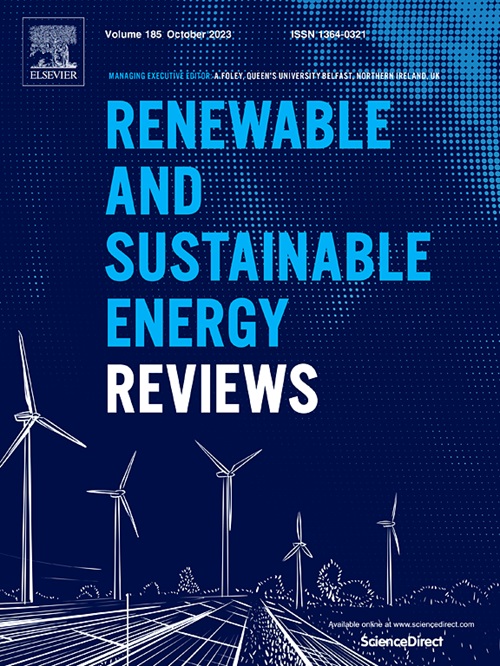End-of-life wind turbine blades and paths to a circular economy
IF 16.3
1区 工程技术
Q1 ENERGY & FUELS
引用次数: 0
Abstract
A structured literature review is used to identify barriers to the recommended methods of processing end-of-life wind turbine blades. The Waste Management Hierarchy recommends firstly avoidance, then repurposing, recycling, energy recovery and lastly, disposal. The review finds that most recent research articles are concerned with recycling, despite its position in third place in the Hierarchy. The review also identifies the following barriers to the first, second and third most recommended processes: misalignment of financial rewards for blade manufacturers making more durable blades; lack of information about blades which could help repurposing and recycling; and lack of financial incentives for any of the top three methods. Based on these findings the following solutions are proposed: alternative payment structures for blade ownership incentivising blade quality and longevity; an information exchange to facilitate the second hand market, repurposing and recycling; and the widespread use of compliance bonds to provide a financial incentive for repurposing and recycling.

求助全文
约1分钟内获得全文
求助全文
来源期刊

Renewable and Sustainable Energy Reviews
工程技术-能源与燃料
CiteScore
31.20
自引率
5.70%
发文量
1055
审稿时长
62 days
期刊介绍:
The mission of Renewable and Sustainable Energy Reviews is to disseminate the most compelling and pertinent critical insights in renewable and sustainable energy, fostering collaboration among the research community, private sector, and policy and decision makers. The journal aims to exchange challenges, solutions, innovative concepts, and technologies, contributing to sustainable development, the transition to a low-carbon future, and the attainment of emissions targets outlined by the United Nations Framework Convention on Climate Change.
Renewable and Sustainable Energy Reviews publishes a diverse range of content, including review papers, original research, case studies, and analyses of new technologies, all featuring a substantial review component such as critique, comparison, or analysis. Introducing a distinctive paper type, Expert Insights, the journal presents commissioned mini-reviews authored by field leaders, addressing topics of significant interest. Case studies undergo consideration only if they showcase the work's applicability to other regions or contribute valuable insights to the broader field of renewable and sustainable energy. Notably, a bibliographic or literature review lacking critical analysis is deemed unsuitable for publication.
 求助内容:
求助内容: 应助结果提醒方式:
应助结果提醒方式:


